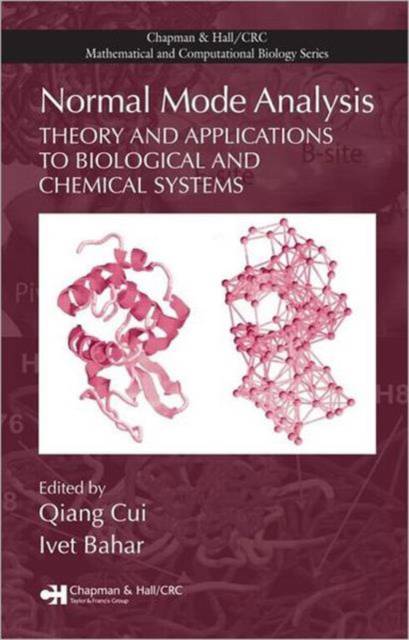
- Afhalen na 1 uur in een winkel met voorraad
- Gratis thuislevering in België vanaf € 30
- Ruim aanbod met 7 miljoen producten
- Afhalen na 1 uur in een winkel met voorraad
- Gratis thuislevering in België vanaf € 30
- Ruim aanbod met 7 miljoen producten
Zoeken
Normal Mode Analysis
Theory and Applications to Biological and Chemical Systems
€ 256,95
+ 513 punten
Omschrijving
Rapid developments in experimental techniques continue to push back the limits in the resolution, size, and complexity of the chemical and biological systems that can be investigated. This challenges the theoretical community to develop innovative methods for better interpreting experimental results. Normal Mode Analysis (NMA) is one such technique. Capable of providing unique insights into the structural and dynamical properties of complex systems, it is now finding a wide range of applications in chemical and biological problems. From the fundamental physical ideas to cutting-edge applications and beyond, this book presents a broad overview of normal mode analysis and its value in state-of-the-art research. The first section introduces NMA, examines NMA algorithm development at different resolutions, and explores the application of those techniques in the study of biological systems. Later chapters cover method developments based on or inspired by NMA but going beyond the harmonic approximation inherent in standard NMA techniques. Normal mode analysis complements traditional approaches with computational efficiency and applicability to large systems that are beyond the reach of older methods. This book offers a unique opportunity to learn from the experiences of an international, interdisciplinary panel of top researchers and explore the latest developments and applications of NMA to biophysical and chemical problems.
Specificaties
Betrokkenen
- Uitgeverij:
Inhoud
- Aantal bladzijden:
- 430
- Taal:
- Engels
- Reeks:
Eigenschappen
- Productcode (EAN):
- 9781584884729
- Verschijningsdatum:
- 12/12/2005
- Uitvoering:
- Hardcover
- Formaat:
- Genaaid
- Afmetingen:
- 164 mm x 242 mm
- Gewicht:
- 757 g

Alleen bij Standaard Boekhandel
+ 513 punten op je klantenkaart van Standaard Boekhandel
Beoordelingen
We publiceren alleen reviews die voldoen aan de voorwaarden voor reviews. Bekijk onze voorwaarden voor reviews.










